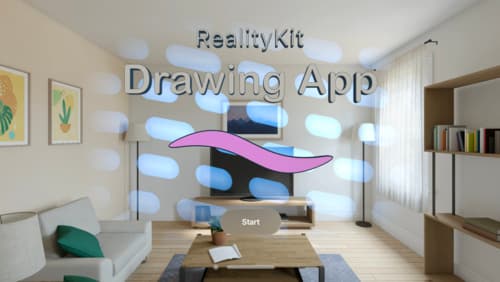How can I interact with an Entity?
Asked on 2024-08-01
1 search
To interact with an entity in visionOS, you can follow several guidelines and techniques presented in the session Design interactive experiences for visionOS. Here are some key points:
-
Introduce Familiar Objects: Start by introducing a familiar object, character, or pattern that the audience recognizes. Use cues like proximity, motion, and sound to invite interaction. For example, a butterfly might flutter towards the audience, drawing their attention and inviting them to reach out (Design interactive experiences for visionOS).
-
Use Eye Contact and Proximity: Characters can maintain eye contact and track hand movements to create a sense of interaction. For instance, a character might look at the participant and track their hand movements, but only allow interaction when they are within a certain proximity (Design interactive experiences for visionOS).
-
Hand and Body Interactions: Utilize hand and body interactions to make characters come alive. For example, a dinosaur might allow participants to pet it, building trust as one might with a real animal (Design interactive experiences for visionOS).
-
Consistent Interaction Rules: Establish consistent rules for when and how interactions can occur. This helps maintain immersion and ensures the audience knows what to expect. For example, interactions might only be possible when a character is within a certain distance or looking directly at the participant (Design interactive experiences for visionOS).
-
System Gestures: Attach gestures to entities to make them interactive. For example, entities that need to be tappable should have an input target component and a collision component. You can then attach a gesture to the reality view containing your entities and respond to it in the gesture handlers (Explore game input in visionOS).
By following these guidelines, you can create engaging and intuitive interactions with entities in visionOS.

Build a spatial drawing app with RealityKit
Harness the power of RealityKit through the process of building a spatial drawing app. As you create an eye-catching spatial experience that integrates RealityKit with ARKit and SwiftUI, you’ll explore how resources work in RealityKit and how to use features like low-level mesh and texture APIs to achieve fast updates of the users’ brush strokes.

Explore game input in visionOS
Discover how to design and implement great input for your game in visionOS. Learn how system gestures let you provide frictionless ways for players to interact with your games. And explore best practices for supporting custom gestures and game controllers.

Design interactive experiences for visionOS
Learn how you can design a compelling interactive narrative experience for Apple Vision Pro from the designers of Encounter Dinosaurs. Discover how these types of experiences differ from existing apps, media, and games, and explore how to design narratives that bring audiences into new worlds. Find out how you can create stories that adapt to any space and size, provide multiple levels of interaction to make them accessible to all, and use animation, spatial audio, and custom gestures to further immerse people in your experience.
